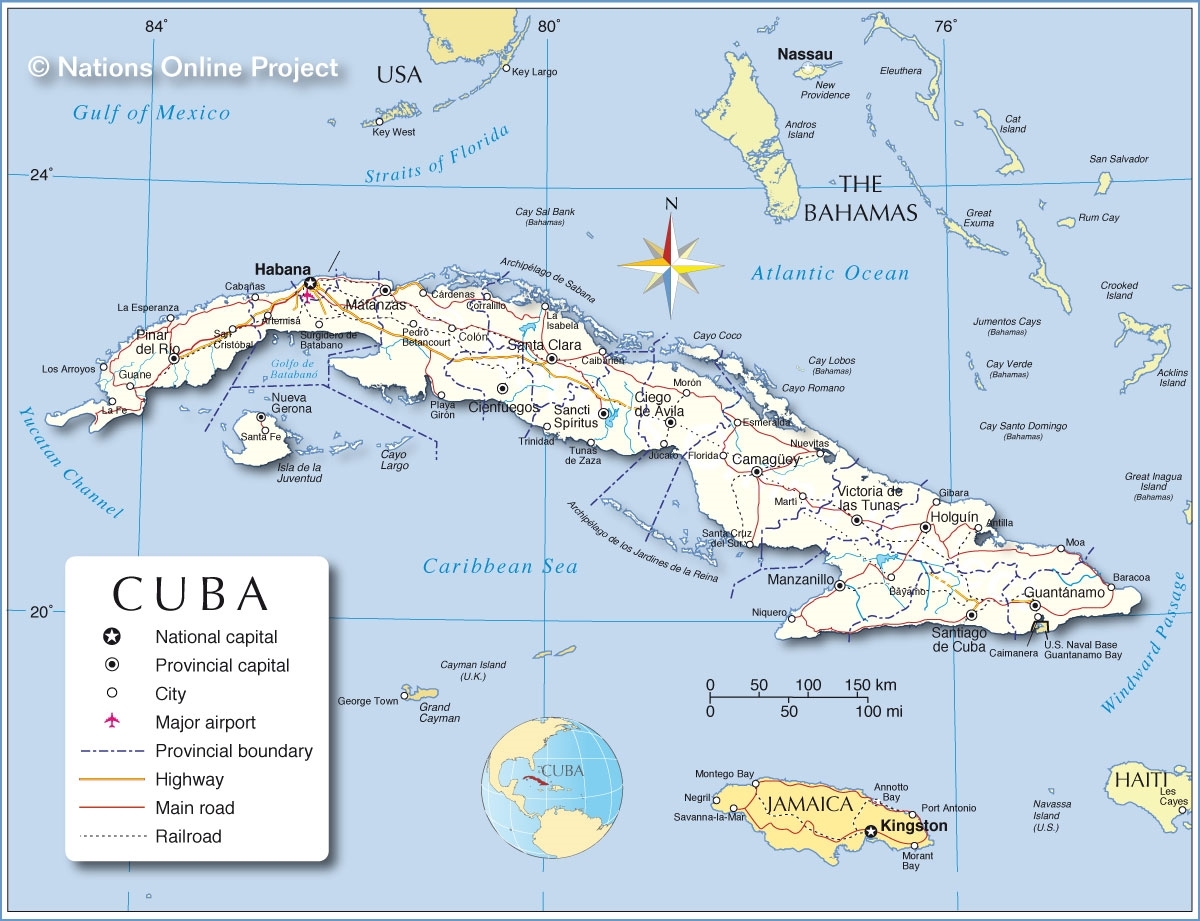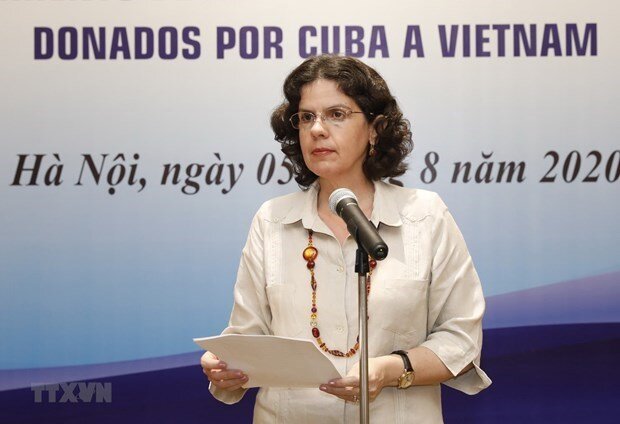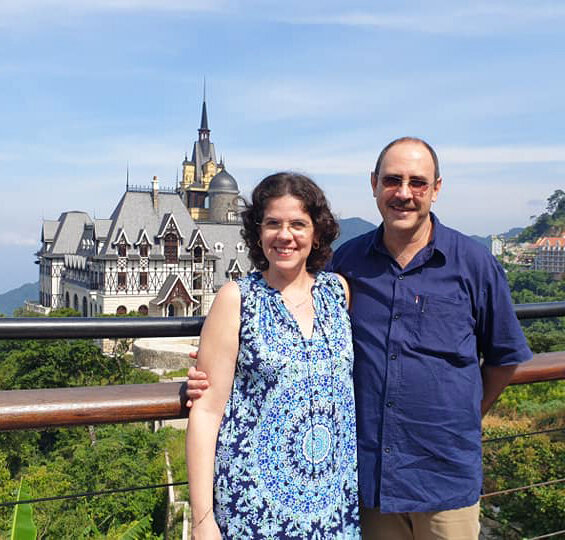Will Israel Shipping Company About To IPO In U.S. Become 33rd Libertad Act Lawsuit?
Will Trump Administration Intervene?
Jared Kushner’s Possible Final Project
Haifa, Israel-based ZIM Integrated Shipping Services Ltd. (2019 revenues US$3.3 billion) which owns one vessel and charters sixty-nine vessels, provides services from the United States to the Republic of Cuba including to Terminal de Contanedores de Mariel SA (TC Mariel).
On 30 December 2020, ZIM Integrated Shipping Services Ltd. filed with the United States Securities and Exchange Commission (SEC) a registration statement on Form F-1 for an Initial Public Offering (IPO) in the United States. The company expects to raise US$300 million to US$500 million providing the company with a market capitalization of US$1.5 billion.
New York, New York-based Citigroup Inc., New York, New York-based Goldman Sachs & Co., LLC., and London, United Kingdom-based Barclays plc are global coordinators and New York, New York-based Jefferies Group LLC and Oslo, Norway-based Clarksons Platou Securities AS act as joint bookrunners for the proposed offering.
Mr. Eyal Ofer, a member of the family that controls ZIM Integrated Shipping Services Ltd., has since 1995 served as a Director of Miami, Florida-based Royal Caribbean Group (2019 revenues US$10.9 billion). Ofer family members have been major shareholders of Royal Caribbean Group. From the 2019 Form 10-K filing: “On August 27, 2019, two lawsuits were filed against Royal Caribbean Cruises Ltd. in the U.S. District Court for the Southern District of Florida under Title III of the Cuban Liberty and Democratic Solidarity Act, also known as the Helms-Burton Act.”
On 20 December 2020, Jacksonville, Florida-based Crowley Maritime Corporation (2019 revenues approximately US$2.5 billion) and Miami, Florida-based Seaboard Marine, a wholly-owned subsidiary of Merriam, Kansas-based Seaboard Corporation (2019 revenues of US$6.8 billion) were named as defendants in separate lawsuits filed using Title III of the Cuban Liberty and Democratic Solidarity Act of 1996 (known as “Libertad Act”). Both companies provide services to the Republic of Cuba including to TC Mariel.
Title III authorizes lawsuits in United States District Courts against companies and individuals who are using a certified claim or non-certified claim where the owner of the certified claim or non-certified claim has not received compensation from the Republic of Cuba or from a third-party who is using (“trafficking”) the asset. Thus far, thirty-two Title III lawsuits have been filed in jurisdictions throughout the United States.
The Revolutionary Armed Forces (FAR) of the Republic of Cuba-controls Grupo de Administración Empresarial S.A. (GAESA), which has interests in the tourism, financial investment, import/export, and remittance sectors. The Special Development Zone of Mariel (ZEDM) is managed by Republic of Cuba government-operated Almacenes Universales S.A., a subsidiary of GAESA. Almacenes Universales S.A. focuses upon “professional, technical and skilled workers linked to logistics activities, warehousing, transportation and port activities.”
GAESA is on the State Department’s List of Restricted Entities and Subentities Associated with Cuba (“Cuba Restricted List” or “CRL”). The CRL is a list of entities and subentities “under the control of, or acting for or on behalf of, the Cuban military, intelligence, or security services or personnel with which direct financial transactions would disproportionately benefit such services or personnel at the expense of the Cuban people or private enterprise in Cuba.”
GAESA is on the List of Specially Designated Nationals and Blocked Persons by the OFAC pursuant to the Cuban Assets Control Regulations (CACR), 31 C.F.R. part 515.
Since 2013, vessels from the United States and other countries have been calling at TC Mariel, located approximately forty (road) miles from the city of Havana. TC Mariel is managed by Singapore-based PSA International Pte Ltd (2019 revenues approximately US$4 billion). The container terminal is within the 180-square-mile ZEDM. The facility has 2,300 feet of jetty and four quay cranes which can accommodate 13,000 TEU Neo-Panamax vessels.
Salvador, Brazil-based Odebrecht (2016 revenues approximately US$30 billion; now in bankruptcy) was the primary contractor for TC Mariel and ZEDM. Approximately US$683 million in primary financing was provided by Brasilia, Brazil-based National Bank of Economic and Social Development (BNDES) of Brazil. Institutions in China and Venezuela also provided financing.
Companies servicing TC Mariel include: Brooklyn Park, Minnesota-based MM Shipping & Freight Forwarding LLC; Copenhagen, Denmark-based Maersk A/S; Geneva, Switzerland-based Mediterranean Shipping Company S.A.; Haifa, Israel-based ZIM Integrated Shipping Services Ltd.; Hamburg Germany-based Hamburg Sud; Hamburg, Germany-based Hapag-Lloyd AG Jacksonville, Florida-based Crowley Maritime Corporation; Marseille, France-based CMA CGM S.A.; Rotterdam, The Netherlands-based W.E.C. Lines B.V.; Shanghai, China-based China Shipping (Group) Company; Shanghai, China-based COSCO Shipping Lines Co.’ Ltd. South Holland, Netherlands-based Nirint Shipping B.V.; and Taipei, Taiwan-based Evergreen Marine Corporation.
Title III Lawsuits Against Crowley Maritime And Seaboard Marine
On 2 May 2019, the Trump Administration made operational Title III of the Cuban Liberty and Democratic Solidarity Act of 1996 (known as “Libertad Act”). Title III authorizes lawsuits in United States District Courts against companies and individuals who are using a certified claim or non-certified claim where the owner of the certified claim or non-certified claim has not received compensation from the Republic of Cuba or from a third-party who is using (“trafficking”) the asset. Thus far, thirty-two Title III lawsuits have been filed in jurisdictions throughout the United States.
Libertad Act Title III exceptions to the definition of “trafficking” include “transactions and uses of property incident to lawful travel to Cuba, to the extent that such transactions and uses of property are necessary to the conduct of such travel; or transactions and uses of property by a person who is both a citizen of Cuba and a resident of Cuba, and who is not an official of the Cuban Government or the ruling political party in Cuba.” There is no visible exception for non-travel-related activity.
The Trade Sanctions Reform and Export Enhancement Act (TSREEA) of 2000 re-authorized the direct commercial (on a cash basis) export of food products (including branded food products) and agricultural commodities from the United States to the Republic of Cuba, irrespective of purpose. The TSREEA does not include healthcare products, which remain authorized and regulated by the Cuban Democracy Act (CDA) of 1992. For the period December 2001, the first exports using the TSREEA, through October 2020 (latest data), total exports using the TSREEA exceed US$6,270,742,423.00. In twelve of nineteen years, poultry (transported in containers) was the largest U.S. Dollar value export.
Currently, United States TSREEA exporters receive control of payment from the Republic of Cuba prior to product departing United States ports. Previously, United States exporters received control of payment when the vessel arrived to the Republic of Cuba, but had not yet been unloaded.
From the two recent (31st and 32nd) lawsuit filings: “The fact of the confiscation of the Blanco Rosell Siblings’ property in Cuba was so well known that, on April 18, 2019, the day after the Trump Administration announced that it would allow Helms-Burton Act lawsuits under Title III to go forward, stories published on both Radio Marti and TV Marti identified Plaintiff’s claims to the Mariel Special Development Zone as one of the top 10 potential Helms-Burton Claims: The Mariel Special Development Zone, the star Cuban project to attract investment, was built on nationalized land where the Carranza-Bernal, Carbonell-González and Blanco-Rosell families owned sugar and hemp processing plants.”
For plaintiffs, there are three focuses: Do they have standing to file a lawsuit. Does the court have jurisdiction over the lawsuit. Does the defendant have assets accessible using a court judgement.
ODETTE BLANCO DE FERNANDEZ née BLANCO ROSELL, Plaintiff, v. CROWLEY MARITIME CORPORATION, Defendant. [3:20-cv-01426]; Middle District Florida
Murphy & Anderson, P.A. (plaintiff)
Berliner Corcoran & Rowe LLP (plaintiff)
Fields PLLC (plaintiff)
Law Offices of John S. Gaebe P.A. (plaintiff)
LINK To Complaint (12/20/20)
LINK To Libertad Act Lawsuit Filing Statistics
LINK To Mariel Special Economic Zone
Jacksonville, Florida-based Crowley Maritime Corporation (2019 revenues approximately US$2.5 billion). “Crowley, founded in 1892, is a privately-held, U.S.-owned and operated logistics, government, marine and energy solutions company headquartered in Jacksonville, Florida. Services are provided worldwide by four primary business units – Crowley Logistics, Crowley (Government) Solutions, Crowley Shipping and Crowley Fuels.”
ODETTE BLANCO DE FERNANDEZ née BLANCO ROSELL, Plaintiff, v. SEABOARD MARINE, LTD., Defendant. [1:20-cv-25176; Southern Florida District]
Horr, Novak & Skipp, P.A. (plaintiff)
Law Offices of John S. Gaebe (plaintiff)
Berliner Corcoran & Rowe (plaintiff)
Fields (plaintiff)
LINK To Complaint (12/20/20)
LINK To Libertad Act Lawsuit Filing Statistics
LINK To Mariel Special Economic Zone
Miami, Florida-based Seaboard Marine is a wholly-owned subsidiary of Merriam, Kansas-based Seaboard Corporation (2019 revenues of US$6.8 billion). Butterball Turkey is a subsidiary of Seaboard Corporation. Seaboard Corporation 2019 Annual Report: "At Seaboard Marine, our container line operating throughout the Americas surpassed $1 billion in revenues despite fierce competition for market share by both regional and global carriers. We run multiple routes from six U.S. ports to 26 countries in the Caribbean, Central and South America."
ZIM ANNOUNCES FILING OF F-1 REGISTRATION STATEMENT FOR THE ISSUANCE OF ITS ORDINARY SHARES
31 December 2020: (Haifa, Israel) ZIM Integrated Shipping Services Ltd. (the "Company"), announces that it filed on December 30, 2020, a registration statement on Form F-1 with the US Securities and Exchange Commission (SEC) for an initial public offering of its ordinary shares.
The amount of ordinary shares to be offered and the price per share has not yet been determined. Citigroup, Goldman Sachs & Co., LLC., and Barclays act as global coordinators and Jefferies and Clarksons Platou Securities act as joint bookrunners for the proposed offering.
The proposed offering will be made only by means of a prospectus. Copies of the preliminary prospectus relating to the proposed offering, when available, may be obtained from: Citigroup Global Markets Inc., c/o Broadridge Financial Solutions, 1155Long Island Avenue, Edgewood, New York 11717, by telephone at 1-800-831-9146; Goldman Sachs & Co. LLC, Attention: Prospectus Department, 200 West Street, New York, NY 10282, by telephone at 1-866-471-2526 or by email at prospectus-ny@ny.email.gs.com; and Barclays Capital Inc., c/o Broadridge Financial Solutions, 1155 Long Island Avenue, Edgewood, NY 11717, by telephone at 1-888-603-5847 or by email at barclaysprospectus@broadridge.com.
From The Company
“ZIM was established in 1945 by the Jewish Agency, Histadrut labor federation, and the Israel Maritime League. The company's first ship, the Kedmah, was purchased in 1947. The early fleet included ships that were refitted to carry immigrants from Europe and to bring much-needed supplies during the 1948 War of Independence, and the difficult early years of statehood.
In 1969, approximately 50% of ZIM was acquired by the Israel Corporation. By ZIM’s 25th anniversary in 1970, the company owned 77 ships, chartered 70 ships, and operated 19 major cargo lines, carrying 4.3 million tons of cargo annually. Next, ZIM made the bold move into container shipping. ZIM was a pioneer in this area, one of the first carriers in the world to adopt the technology that was new at the time, yet destined to dominate the shipping industry in the decades to come. To this end, the company acquired six specialized container ships, in addition to containers and shore equipment
In 1972, ZIM introduced the innovative ZCS. The “ZIM Container Service” was a three-continent line, with a scheduled 100-day journey that originated in Israel and included ports of call in the Far East, Asia, America and Europe. During this period, ZIM also deployed tankers to carry crude oil from Iran to Israel, and finished goods from Israel to Europe. During the late 1980s, ZIM embarked on a massive fleet renovation and expansion project. From 1990 to 1997, ZIM built 15 modern ships, enabling the company to offer a weekly fixed-day sailing schedule, positioning ZIM among the world’s top-ranking shipping companies.
In response to the global shipping crisis in 1997, a result of the financial crisis in Asia, ZIM launched a new effort to optimize the company’s operations through increased efficiency and focused expansion. The company added 13 new 5,000 TEU container ships to its fleet, increasing ZIM’s cargo capacity by a remarkable 50% within two years.
In 1999, the Ofer Brothers Group became the controlling shareholder of the Israel Corporation. In 2004, the Israel Corporation acquired the remaining ZIM shares held by the government, completing ZIM's privatization process. The current ownership structure was established following a large-scale financial restructuring in 2014. ZIM's shareholders include Kenon Holdings Ltd. (32%) as well as a number of financial institutions and ship owners (68%). This stable backing constitutes a solid foundation from which to expand ZIM's activities, along with the strong support needed in order to take ZIM to new heights, as we continue to provide outstanding shipping services and solutions to diverse clients worldwide.
Facts & Figures
Annual turnover 2019: US$3,299.8 million
TEU's Carried in 2019: 2,821,000
Total TEU Capacity (owned and chartered vessels): about 384,000 TEU's
Containers: about 630,000 TEUs of various types
About 81 operated vessels
Ports of Call: 310 throughout the world, with 10 strategically located hubs
Services: Over 100 lines and services, mostly on a weekly, fixed-day basis, covering major trade routes with regional connections
Employees: ~3,800
Agents: ZIM has more than 200 offices and representatives in over 100 countries throughout the world
China: Strong presence in China with 20 offices and branches and hundreds of employees”
Maritime Executive
Fort Lauderdale, Florida
2 January 2021
Zim Files for Initial Stock Offering on the NYSE
Zim filed a preliminary prospectus with the U.S. Securities Exchange Commission on December 31, 2020, for its long-anticipated initial public offering. The container and logistics company plans to trade its shares on the New York Stock Exchange becoming only the second container line after Matson to be listed on the Big Board.
Terms of the offering are not included in a preliminary filing, which is submitted to the SEC for review and approval, but the Israeli news outlet Globes reports that Zim is targeting raising between $300 and $500 million in the offering, which would give the company a market value of $1.5 billion. The offering, which is being led globally by Barclays, Goldman Sachs, and Citigroup, would provide Zim with funds to support long-term growth initiatives. The prospectus highlights that they do not have specific plans for the proceeds, but that its uses would include investing in vessels, containers, and other digital initiatives, strengthening the capital structure, fostering financial flexibility, or possibly to service or repay certain outstanding debt.
Zim has been openly discussing its goal of running an IPO for months. The company had taken several steps to improve its financials, including the early repayment of $55 million in debt in September. The timing of the offer, which is expected to be completed by late January, is seen as a move to leverage the strength of the global container and logistics markets.
Zim's most recent financial results show a strong performance with revenues up more than six percent in the first nine months of 2020 to over $2.6 billion. The adjusted net profit for the first nine months of the year was nearly $176 million versus a $10 million loss in 2019.
The draft prospectus lays out the investment case for Zim highlighting what they call their “asset-light model,” along with a flexible structure focused on niche routes and markets. The global network includes 66 weekly lines calling at 310 ports in more than 80 countries.
Zim highlights that it currently only owns one vessel while it charters 69 vessels, which they compare to competitors which they report own 44 percent of their fleets. Zim says that nearly 99 percent of its TEU capacity, which is approximately 359,00 TEU, is chartered. The majority of the vessels they operate are mid-sized with a capacity of between 3,000 and 10,000 TEUs, giving it the ability to service niche routes not fully serviced by competitors. In 2019, Zim reports it carried a total of 2.8 million TEU.
By operating with a charter fleet, Zim contends that it can quickly adjust capacity in anticipation or in response to changing market conditions. Currently, nearly 80 percent of the fleet is under leases having a remaining charter duration of one year or less.
Found in 1945, Zim says that it currently services five trade zones. The Transpacific is the largest, accounting for 39 percent of the TEUs carried, followed by the Atlantic, Cross Suez, Intra-Asia, and Latin America. Examples of the niche routes they highlight are the US East Coast and Gulf to the Mediterranean, the eastern Mediterranean and Black Sea to the Far East, and the Far East to the US East Coast. They also highlight their new premium high-speed services which move freight from China to Los Angeles and Australia. Focused on time-sensitive cargo, they believe these services provide an alternative to airfreight.
One area of growth that Zim highlights is on its Transpacific routes. The company says it is currently exploring long-term lease arrangements for vessels that could reach 15,000 TEU. They would replace smaller vessels on the route, expanding the capacity as well as being among the largest ships in Zim’s fleet.
LINK To Complete Analysis In PDF Format






















































